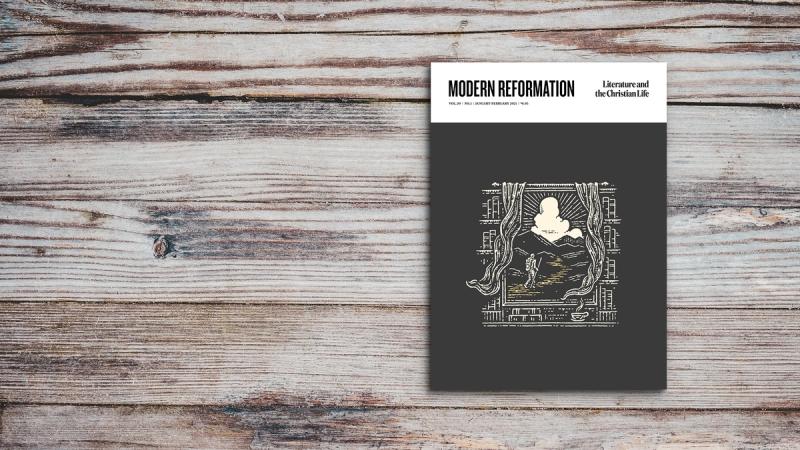The Overstory
By Richard Powers
W. W. Norton, 2018
502 pages (paperback), $18.99
It has long been known that powerful storytelling helps us become more sympathetic toward others. Thousands of years ago, Aristotle demonstrated the importance of using drama to create compassion in us toward the plight of others through what he called “catharsis”—a purification of our emotions. Theatergoers in ancient Athens are said to have wept at tragic plays, and we still cry at those emotional stories that produce empathy in us.
What happens, though, when the main character of the drama is not human? What can a writer do to move us—to touch our emotions, to enrage us, to make us weep—when we’re talking about trees? This is exactly what I think Richard Powers is trying to do with his best-selling novel The Overstory, which won the 2019 Pulitzer Prize for Literature. But why write a novel instead of producing an environmental journal article or a book? For one, there are already plenty of excellent publications that provide insightful analyses of current environmental problems and possible solutions, which should indeed be read and heeded. What I believe Powers is doing in The Overstory is bring the planet to life, with trees in particular as sentient beings. Apart from J. R. R. Tolkien’s Ents of Middle Earth, this may seem crazy, but it worked for this reader. When an author can make you feel empathy toward a particular tree—in this case, an ancient, giant coastal redwood called Mimas—then we become concerned with its welfare. In this book, for example, a couple of activists take up residence in Mimas for two years, trying to protect this towering wonder of creation from becoming a nice deck for someone’s backyard.
By calling it The Overstory, Powers is already setting us up to see that the events of this book are overarching, part of the “Big Picture” of this world, something higher, deeper, and greater than the mere humans who spend a small lifetime here. In fact, by the time we arrive at the conclusion of this story, we learn that it is we humans who are the actual tragic characters, moving faster and faster toward “collective suicide.” When we realize this, then we begin to understand the urgent motivation behind the actions of the nine human characters in the novel. By the time we reach the climax of the plot, we should understand what one of the characters means by our desperate need to commit “unsuicide”—that is, stop the death we’re bringing upon ourselves and choose life instead.
Although I don’t know anything about Richard Powers’ religious commitments (if any), he does refer to the fall of humanity in that ancient perfect garden when we ate from that one prohibited tree—the tree of the knowledge of good and evil. In a fascinating 2019 Los Angeles Review of Books interview with Everett Hamner, Powers says, “As one of the characters in the book laments, we are all ‘plant blind. Adam’s curse. We only see things that look like us.’” Readers of Modern Reformation understand what it is to still feel this curse in the world around us. Although Christ has redeemed both humanity and creation, Paul says that it groans now as if in childbirth (Rom. 8:22). Creation groans and humanity groans along with it, waiting for Christ’s return and the new heaven and the new earth.
We also feel that curse today when we see how many have turned to a “feel-good” religion, putting themselves first instead of the kingdom of God. In the garden, we wanted to be gods ourselves, and not much has changed since then. The anti-authoritarian, independent mentality so characteristic of American society—as events over the past year or so have evidenced—is, Powers says, moving us closer every day to “collective suicide.” This is consistent with the Christian understanding of sin as self-destructive. We need to wake up and realize that it’s we who really need a healthy planet. The planet has been telling us loud and clear that something drastically needs to change in our behaviors.
As Christians, we believe that we were created in God’s image and that we are the caretakers of God’s creation around us. As stated in Genesis 1:11–12, “Then God said, ‘Let the land produce vegetation: seed-bearing plants and trees on the land that bear fruit with seed in it, according to their various kinds.’ And it was so. . . . And God saw that it was good.” God’s creation is indeed good, and we are to be responsible stewards of it.
The Overstory is a monumental book with nine characters whose lives we follow pretty much from their childhood to their end or near their end—and there’s definitely too much to discuss in this short book review. Suffice it to say that Powers divides the book into four main sections: “Roots,” “Trunk,” “Crown,” and “Seeds.” Throughout these pages, we—along with the characters—begin to understand the truth of what nature is really trying to say to us.
After starting with roots that intertwine endlessly underground, we move up the sturdy trunk and into the crown with branches that seem to reach up to heaven, finishing back on the forest floor as seeds that need to be sown in order to sprout new life. Through this journey, we learn that everything on this earth is interconnected—humanity and nature. But in order to hear creation’s message, we humans need to learn to be silent, patient, and humble enough for our ears and minds to be fully open. Much like God speaking to Elijah in the still, quiet voice of the whirlwind.
At the end of the book Nick, the botanical artist, finds himself in some northern woods (he’s not exactly sure where) with a few Native Americans. Together, they create art out of fallen logs, spelling out the word STILL—something so large, it can be seen in its entirety only from space. When these people of the forest finish their ancient chant, Nick “adds, Amen, if only because it may be the oldest single word he knows” (501). Powers continues,
The older the word, the more likely it is to be both useful and true. In fact, [Nick] read once, back in Iowa, the night the woman came to trouble him into life, that the word tree and the word truth come from the same root. . . . He stares off into the north woods, where the next project beckons. Branches, combing the sun, laughing at gravity, still unfolding. Something moves at the base of the motionless trunks. Nothing. Now everything. This, a voice whispers, from very nearby. This. What we have been given. What we must earn. This will never end. (501–2)
“Tree” and “truth” really do come from the same root word. Perhaps if we can learn to pay close attention, we may indeed hear what creation has been whispering in song to us for millennia.
Then all the trees of the forest will
sing for joy;
They will sing before the Lord. (Ps. 62:12)
Patricia Anders is managing editor of Modern Reformation.







